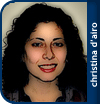
As the 2010 fiscal year comes to a close, the passive component market is showing steady signs of life and growth with capacitors leading the way. The capacitor market saw some significant improvements in design and technology this year, including devices with increased voltages, smaller and more reliable packages, and even a hybrid lithium-ion device.
So, what can we expect for the coming months?
Joe Moxley, a senior engineer at Custom Electronics (www.customelec.com), was able to provide me with some insight to the current state of the passive components market, including some trends for the coming year. Moxley states that, “Total sales of passive devices, including modular devices, in 2009 was $22 billion, and even with the downturn in the worldwide economy, the market continues to grow, albeit somewhat more slowly than in the past. By far, capacitors account for the largest segment of the market, capturing 60% ($13 billion), with modular components accounting for 20% ($4.4 billion) with the balance going to inductors, resistors and other items classified as passive components. Modular components, such as dc/dc converter modules, while not strictly passive components, are included as many passive component manufacturers produce them, which is a growing trend that will continue.”
Overall, passive component trends for this and the coming year are expected to be driven by the current market interest in products that are smaller, less expensive, and yet still high quality. For capacitors, manufacturers need to examine a variety of materials that exhibit dielectric properties that will enhance energy density, frequency response, ESR, ESL, and temperature range. “The multilayer ceramic capacitor (MLCC) is an excellent example of a passive component that has enjoyed robust growth using a wide variety of dielectric materials and making improvements to device design,” says Moxley. “There are many engineered dielectric materials that have been used in MLCC devices, which allow an array of devices to be built to meet specific design requirements. EIA Class 2 dielectrics, for example, are available in various temperature and tolerance ranges, allowing manufacturers to produce capacitors for a particular purpose. Advances in material science have led to a burgeoning of passive components designed for a particular application, and this trend will only continue.”
While there may be new developments in technology that are still yet to be seen, capacitor manufacturers remain focused not only on finding new and less-expensive materials for their devices, but also better and more-efficient packaging techniques and manufacturing processes.
Advertisement
Learn more about Custom Electronics





